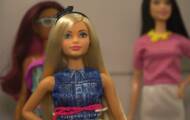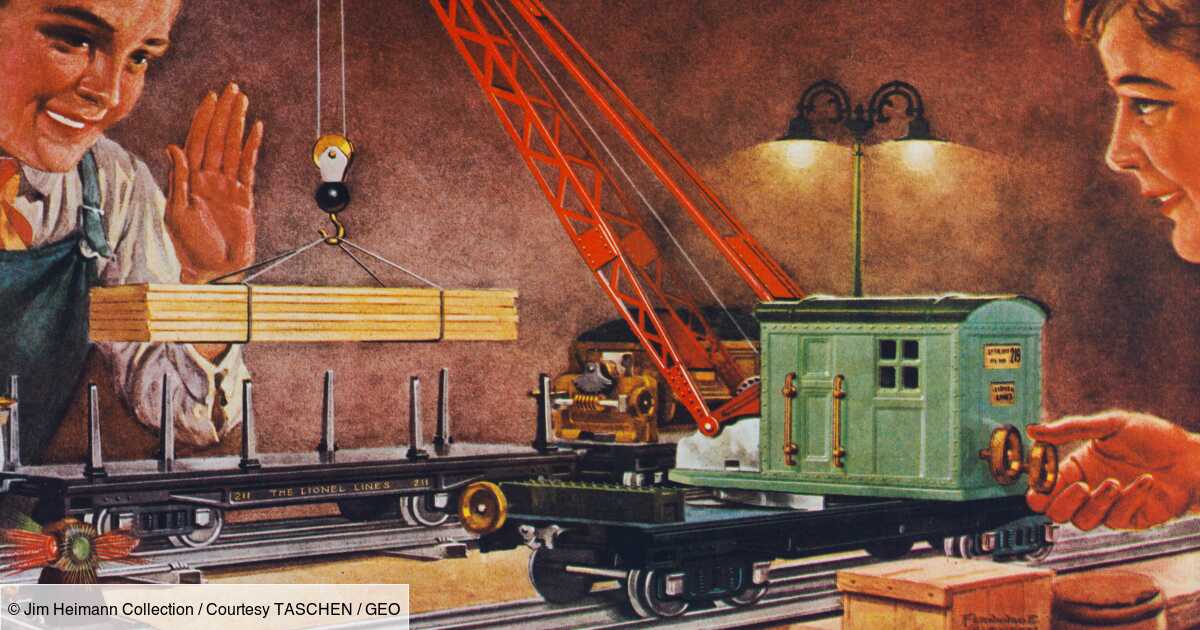GEO History: Games and toys from the United States are among the most popular today, but this was not always the case… When did this industry start to develop?
Jim Heimann : its development is inseparable from jazz age, the 1920s. Until now the country produced only a few wooden or porcelain dolls, or construction kits for boys in a market largely dominated by Germany. Everything changed with the Great War. In 1917, as the United States entered the conflict, the magazine The American Boy announces that there will be “no toy from Europe this year”, more than “no one in America will be deprived of toys”.
Protectionism will continue after the victory. On some inserts, Uncle Sam calls for “buy American”, because it is “with these toys that we have the best fun”. The nation has been little affected by the war, while Europe heals its wounds, and the toy market is taking full advantage of the economic dynamism. We see the appearance of small cars, board games, railway circuits, all “made in the USA” …
Has this toy industry been hit by the Great Depression ?
Of course, like the entire American economy, which is experiencing a deep crisis, from the devastating collapse of the stock market in October 1929 until the establishment of the New Deal ten years later. But, despite the hardships, parents are determined not to totally sacrifice Christmas or children’s birthdays. We still buy toys, but we buy less. Visibility becomes a challenge: in the United States, we can observe a fierce struggle between manufacturers to highlight their products in store windows, but also through poster campaigns or in the inserts of comics and newspapers.
During the Depression, we rush to catalogs, no doubt to forget the difficult times. Advertising agencies compete in imagination, and when the budget allows, we associate toys with products intended for children, such as Quaker cereals or Aunt Jemina pancake dough, but especially with famous characters: Dick Tracy, Buck Rogers , western actor Tom Mix… This licensing system is still the success of American toys and has helped spread American culture all over the world. An entertainment giant like Disney has built an international empire through its feature films and cartoons, but also through countless derivative products featuring Mickey and Donald.
Did the government use toys as a means of propaganda?
Never directly, although you might think so when you look at the overwhelming success of the GI Joe line, a series of articulated toy soldiers launched by Hasbro in 1964. It certainly helped make the military and special forces very popular among the military. children, but this should not be seen as any intervention by the authorities at a time when the United States is stepping up its engagement in Vietnam. Warrior products have always been very popular with young boys, as evidenced by rifles and pellet guns, which have been at the peak of sales since the early 20th century.
Do toys reflect social upheaval in the United States?
Of course, even if the companies do not always manage to catch the zeitgeist… In the 1970s, Mattel launched a range of colorfully dressed dolls, called Sunshine Family, vaguely inspired by the wave. flower-power. It was a resounding flop. Ten years later, however, the company will experience success with Les Maîtres de l’UUnivers, muscular and aggressive characters intended for little boys. Should we see there a link with triumphant reaganism (America’s back !) from the early 1980s? In any case, they show that toys and their advertising bear precious testimony to the lifestyles and tastes of Americans.
➤ An article published in August 2021 in the GEO Histoire magazine (n ° 58, “Normandy, the saga of a region which marked the history of France”).
➤ To see all GEO History issues available individually, it’s here ! Are you already loyal to GEO content? So not to miss anything, discover our subscription plans to easily receive GEO Histoire at your home.

Read also :

An original and participatory solution to repair toys instead of throwing them away
– –

Barbie doll, 60 years of history
– –

A letter to Santa Claus written in the 1930s resurfaces in Strasbourg
– –
–


:quality(80)/cdn-kiosk-api.telegraaf.nl/c81e0600-47c4-11ec-a03f-02d2fb1aa1d7.jpg)